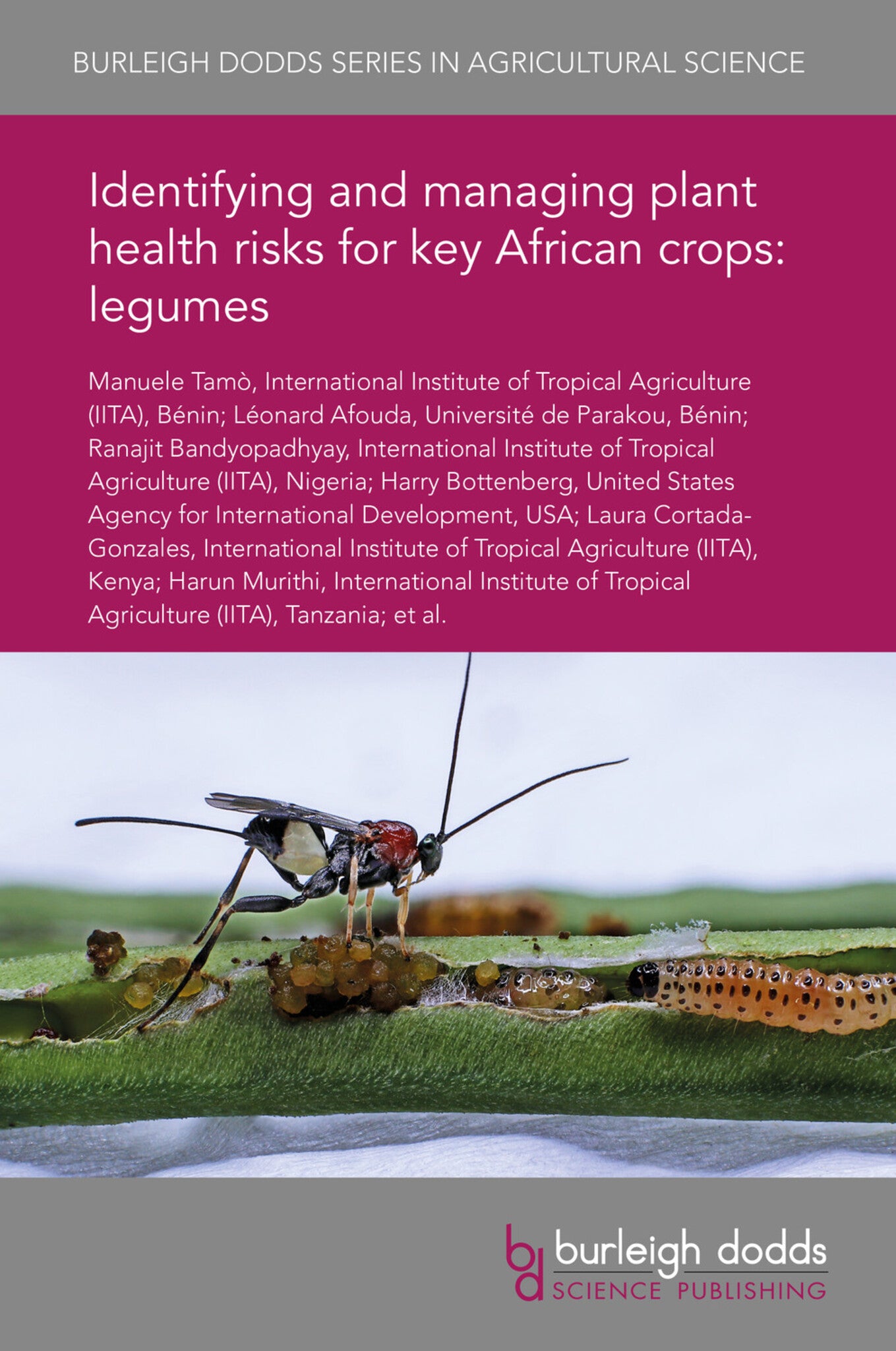We're sorry. An error has occurred
Please cancel or retry.
Identifying and managing plant health risks for key African crops: legumes
Dr manuele tamò,
Dr léonard afouda,
Dr ranajit bandyopadhayay,
Dr harry bottenberg,
Dr laura cortada-gonzales,
View More
Harun m. murithi,
Dr alejandro ortega-beltran,
Prof. barry pittendrigh,
Dr rachidatou sikirou,
Dr abou togola,
Dr kerstin d. wydra
Regular price
£25.00
Sale price
£25.00
Regular price
£25.00
Unit price
/
per
Sale
Sold out
Re-stocking soon
The yield potential of cowpea and soybean is severely constrained by several biotic stresses, negatively impacting on the livelihoods of farming communities. Resistant germplasm is often the first ...
Read More

Some error occured while loading the Quick View. Please close the Quick View and try reloading the page.
Couldn't load pickup availability
- Format:
-
07 February 2019

The yield potential of cowpea and soybean is severely constrained by several biotic stresses, negatively impacting on the livelihoods of farming communities. Resistant germplasm is often the first line of defence against plant pathogens inducing foliar diseases like Asian soybean rust, but needs to be accompanied by proper resistance management plans, including understanding and monitoring of pathotype formation. This chapter shows how combatting soil-borne pathogens, nematodes and particularly insect pests requires a truly integrated approach, which can vary in the assembly of its options depending on the nature of the organism. IITA scientists and collaborators have developed a range of interventions, often discovered only after thorough ecological and biodiversity studies, as in the case of flower thrips and pod borers in cowpea. Our research has resulted in a strategy using tolerant varieties, establishing and preserving natural enemies on wild host plant refugia, and intervening at the field level with biorational pesticide applications.

Price: £25.00
Publisher: Burleigh Dodds Science Publishing
Imprint: Burleigh Dodds Science Publishing
Series: Burleigh Dodds Series in Agricultural Science
Publication Date:
07 February 2019
ISBN: 9781838797584
Format: eBook
BISACs:
TECHNOLOGY & ENGINEERING / Agriculture / Sustainable Agriculture, Pest control / plant diseases, TECHNOLOGY & ENGINEERING / Agriculture / Agronomy / Crop Science, TECHNOLOGY & ENGINEERING / Pest Control, Sustainable agriculture, Agronomy and crop production

1 Introduction 2 Cowpea 3 Soybean 4 Conclusions and future trends 5 Where to look for further information 6 References



